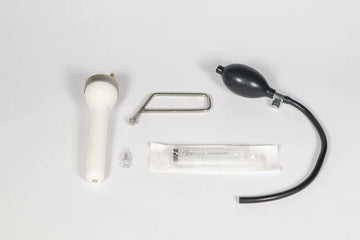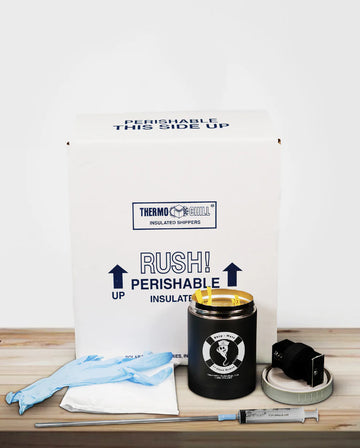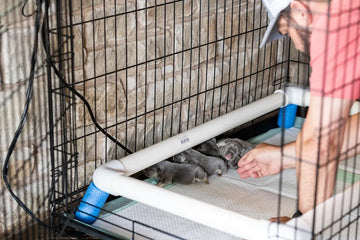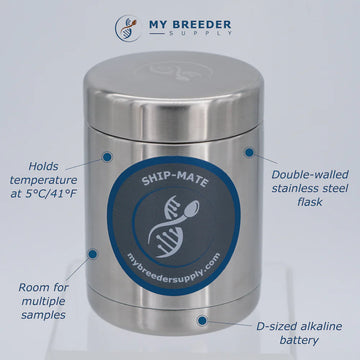
Introduction to Artificial Insemination in Dog Breeding
Artificial insemination (AI) is a widely-used technique in dog breeding that involves the manual introduction of semen into a female dog's reproductive tract. This method has gained popularity among breeders due to its various benefits, such as overcoming mating challenges, enhancing genetic diversity, and reducing the risk of disease transmission. This guide will provide an overview of artificial insemination, its benefits, the different techniques available, and considerations for a successful procedure.
Benefits of AI Kits for Dog Breeders

There are several advantages to using artificial insemination in dog breeding:
Overcoming Mating Challenges
AI allows breeders to overcome physical or behavioral issues that may prevent natural mating. This can be particularly useful for dogs with size discrepancies, disabilities, or temperament issues that hinder successful mating.
Genetic Diversity and Improved Breeding Programs
AI enables breeders to access a wider gene pool by allowing them to use semen from dogs located anywhere in the world. This can lead to improved breeding programs and the preservation of rare or endangered breeds.
Reduced Risk of Disease Transmission
By using AI, breeders can minimize the risk of sexually transmitted diseases and infections that could occur during natural mating.
Components of an AI Kit
A typical AI kit for dog breeders includes the following components:
- Semen collection equipment, such as an artificial vagina or a collection bag
- Sterile insemination supplies, including pipettes, syringes, and catheters
- Semen extenders to preserve and protect the sperm during storage and transportation
- Protective gloves, lubricants, and other necessary supplies for the insemination process
Types of Artificial Insemination Techniques

There are three primary AI techniques used in dog breeding:
Vaginal Insemination
This is the simplest and least invasive method, involving the introduction of semen directly into the female dog's vagina using a syringe or pipette.
Transcervical Insemination
In this technique, a catheter is inserted through the female dog's vagina and cervix to deposit semen directly into the uterus. This method is more effective than vaginal insemination, especially when using frozen semen.
Surgical Insemination
This is the most invasive but also the most effective technique. It involves a minor surgical procedure to introduce semen directly into the female dog's uterus. Surgical insemination is typically reserved for cases where other methods have failed or when the female dog has reproductive issues.
Choosing the Right Insemination Technique
The choice of insemination technique depends on several factors, including the female dog's reproductive health, the quality and type of semen used (fresh, chilled, or frozen), and the breeder's experience and comfort with the procedure. It's essential to consult with a veterinarian experienced in reproductive medicine to determine the most appropriate method for each individual case.
Semen Collection, Storage, and Shipping
Successful artificial insemination depends on the proper collection, storage, and transportation of semen. Breeders can collect semen from male dogs using an artificial vagina or a collection bag. Once collected, the semen can be used immediately (fresh semen), chilled and stored for later use (chilled semen), or frozen for long-term storage (frozen semen).
Chilled and frozen semen requires the addition of semen extenders to protect the sperm during storage and transportation. These extenders contain nutrients, buffers, and antibiotics to maintain sperm viability. The semen should be stored and shipped in specialized containers designed to maintain the appropriate temperature and protect the sperm from damage.
Timing the Insemination Process

Correct timing is crucial for successful artificial insemination. The female dog's ovulation cycle should be closely monitored through hormonal testing, such as progesterone tests, and/or vaginal cytology to determine the optimal time for insemination. Insemination should ideally occur within 48-72 hours of ovulation to maximize the chances of conception.
Pregnancy Detection and Monitoring
After insemination, breeders can monitor the female dog for signs of pregnancy, such as increased appetite, weight gain, and enlarged nipples. A veterinarian can confirm pregnancy through abdominal palpation, ultrasound, or blood tests.
Regular veterinary check-ups throughout the pregnancy are essential to ensure the health and well-being of both the mother and her developing puppies.
Challenges and Considerations
Despite its numerous advantages, artificial insemination also presents some challenges and considerations for breeders:
- Cost: AI can be expensive, particularly when using frozen semen or advanced techniques such as surgical insemination.
- Expertise: Proper AI techniques require training and experience to ensure success and minimize risks to the dogs involved.
- Ethical concerns: Breeders should consider the welfare of the dogs involved and avoid using AI to propagate genetic disorders or to exploit breeds with inherent health issues.
Artificial insemination offers numerous benefits to dog breeders, including overcoming mating challenges, improving genetic diversity, and reducing disease transmission risks. By understanding the different AI techniques, proper semen collection and storage, and appropriate timing, breeders can successfully utilize this advanced reproductive method to enhance their breeding programs.
My Breeder Supply: A Trusted Source for AI Kits
When it comes to purchasing AI kits and related supplies, it's crucial to choose a reliable and reputable provider. My Breeder Supply is a trusted source of high-quality artificial insemination kits, offering a wide range of products designed to cater to the specific needs of dog breeders.
The team at My Breeder Supply is dedicated to providing exceptional customer service and expert advice, guiding breeders through the AI process, and helping them choose the right products for their needs. With a commitment to quality and a focus on the welfare of the dogs involved, My Breeder Supply is an excellent choice for breeders looking to invest in AI kits and related supplies.
By partnering with My Breeder Supply, dog breeders can feel confident that they are using top-quality products designed to facilitate successful artificial insemination procedures while prioritizing the health and well-being of their dogs.
Frequently Asked Questions About AI Kits
1. Can all breeds of dogs benefit from artificial insemination?
Yes, AI can be used for any breed of dog, provided the breeder and their veterinarian carefully consider the individual needs of the dogs involved and follow appropriate procedures.
2. How successful is artificial insemination in dogs?
Success rates vary depending on the AI technique used, the quality of the semen, and the timing of the insemination. With proper planning and execution, AI can achieve success rates comparable to natural mating.
3. Can I perform artificial insemination on my dogs at home?
While some breeders do perform AI at home, it's essential to have the necessary training, experience, and equipment to ensure a successful procedure. Consult with a veterinarian experienced in canine reproductive medicine before attempting AI at home.
4. How long does it take for a dog to become pregnant after artificial insemination?
Pregnancy can be detected as early as 21-28 days after insemination, using methods such as abdominal palpation, ultrasound, or blood tests. However, the gestation period for dogs typically lasts around 58-63 days from the date of ovulation.
5. Can artificial insemination be used to breed dogs with known health issues?
While AI can potentially help breed dogs with physical or behavioral issues that prevent natural mating, it's crucial to prioritize the health and welfare of the dogs involved. Breeders should avoid using AI to propagate genetic disorders or exploit breeds with inherent health problems. Consult with a veterinarian experienced in canine reproductive medicine to determine the most ethical and responsible approach to breeding.




